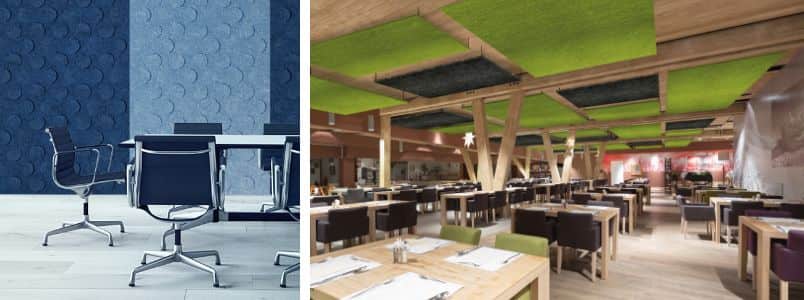Sound Issues: Enhance Your Setting with Acoustic Solutions
Sound Issues: Enhance Your Setting with Acoustic Solutions
Blog Article
Accomplish Perfect Consistency in Your Home With Efficient Soundproofing Methods for Optimum Acoustics
Creating a setting of ideal consistency in your home entails greater than just the looks of decoration and layout. Soundproofing plays an essential role in achieving optimum acoustics, affecting the way we experience and communicate with our home. By recognizing the fundamentals of soundproofing, recognizing sources of noise disruptions, choosing appropriate products, and using tested techniques, you can transform your home into a refuge of tranquility where sound boosts rather than interrupts. The journey to understanding soundproofing techniques for optimal acoustics starts with a thoughtful strategy that stabilizes functionality and comfort, resulting in an immersive auditory experience that truly balances with your way of living.

Understanding Soundproofing Basics
What are the fundamental principles that underlie effective soundproofing strategies? Soundproofing is rooted in the understanding of just how sound waves traveling and engage with various materials. The secret to effective soundproofing exists in interfering with or taking in these acoustic waves to decrease their transmission from one area to an additional. This can be accomplished with numerous approaches, such as including mass to walls, floorings, and ceilings, securing gaps and splits to protect against audio leakage, and making use of sound-absorbing materials like acoustic panels or rugs (acoustic solutions).
Comprehending the concept of sound transmission course (STC) scores is critical in selecting the right materials for soundproofing. The STC rating measures exactly how well a product can decrease airborne audio transmission through it, with higher STC ratings suggesting better soundproofing capabilities. Furthermore, taking into consideration the effect of effect insulation class (IIC) ratings for decreasing effect sound, such as steps or furniture moving, can better enhance the efficiency of soundproofing remedies.
Assessing Noise Sources in your house
Building upon the foundational understanding of soundproofing principles, an essential action in effective sound mitigation within your home entails recognizing and evaluating the different sources of undesirable noise. Noise resources can be categorized into two main types: airborne sound, which consists of audios like conversations, music, and tv, and impact sound, such as footprints or things being gone down. To evaluate these resources, take into consideration the various spaces in your house and the activities that commonly happen in each. For instance, the living-room may have more air-borne sound from enjoyment systems, while effect sound from footprints may be a concern in areas with hard floor covering like corridors or cooking areas.
In addition, take into consideration outside resources of noise, such as website traffic, next-door neighbors, or close-by building, which can likewise impact the acoustics within your home. acoustic solutions. Determining these sources will certainly aid you prioritize areas for soundproofing and pick the most effective solutions. By pinpointing the certain sound resources in your house, you can tailor your soundproofing efforts to accomplish optimum outcomes and produce a more relaxed and harmonious living atmosphere
Selecting the Right Soundproofing Products
When choosing soundproofing materials for your home, it is vital to focus on effectiveness and compatibility with your specific sound worries. Take into consideration aspects such as the kind of sound you are attempting to block, the degree of soundproofing needed, and the aesthetics of the products to guarantee they mix flawlessly right into your space.
One common product for soundproofing is acoustic foam. This lightweight and flexible product is excellent for taking in mid to high-frequency sounds, making it optimal for music areas, home cinemas, or offices. One more choice is mass-loaded plastic, which works in shutting out low-frequency noises like web traffic or machinery sounds. For wall surfaces and ceilings, soundproof drywall is a preferred selection as a result of its capability to lower noise transmission between areas.
Drapes and rugs made from sound-absorbing materials are likewise reliable in moistening noise, specifically in locations with hard surfaces that create noise to jump around. Keep in mind, the secret to effective soundproofing is choosing the ideal products that resolve your certain noise problems while improving the overall convenience and acoustics of your home.
Applying Soundproofing Strategies
To properly apply soundproofing methods in your home, it is crucial to begin by analyzing the areas that are most at risk to noise seepage. visit homepage Typical sources of noise can include external sounds from web traffic, next-door neighbors, or neighboring my blog building and construction, in addition to interior sources like devices, pipes, and enjoyment systems. As soon as you have identified these locations, you can begin applying soundproofing options tailored to every particular area.

For more substantial sound reduction, consider setting up soundproof drywall, double-glazed windows, or resilient networks to isolate vibrations. Furthermore, rearranging furniture, including bookshelves, or including sound-absorbing materials can further boost the acoustics of a space. By purposefully applying these soundproofing techniques, you can create a quieter and more calm living setting in your Visit This Link home.
Maintaining and Improving Acoustic Setting
After applying soundproofing strategies to resolve noise seepage in your house, the emphasis shifts towards maintaining and improving the acoustic atmosphere to guarantee a consistently relaxed space. To preserve optimum acoustics, consistently examine soundproofing materials for deterioration, ensuring they remain effective in obstructing unwanted sound. Maintain doors and windows appropriately sealed to stop sound leak and think about including weather stripping or door moves for additional soundproofing.
Improving the acoustic setting can involve strategic placement of furnishings, rugs, and drapes to moisten sound reflections and echoes. Using sound-absorbing materials such as acoustic panels or foam can additionally enhance the total sound top quality in your home. acoustic solutions. In addition, integrating soft home furnishings like cushions and blankets can assist lower sound echo, creating a more positive auditory experience
Furthermore, buying sound-absorbing decor elements like bookshelves, tapestries, or plants can add to a well balanced acoustic atmosphere. Frequently decluttering your space can additionally avoid acoustic waves from bouncing off surface areas, inevitably boosting the total acoustics of your home. By constantly preserving and enhancing your acoustic atmosphere, you can develop a harmonious and serene space for yourself and your family.
Final Thought
To conclude, achieving perfect consistency in your house through reliable soundproofing strategies is crucial for optimal acoustics. By understanding soundproofing fundamentals, evaluating noise resources, picking the appropriate products, carrying out techniques, and preserving the acoustic atmosphere, you can produce a tranquil and satisfying home without unwanted sound disruptions. Focusing on soundproofing efforts can considerably enhance the total lifestyle in your house.
Report this page